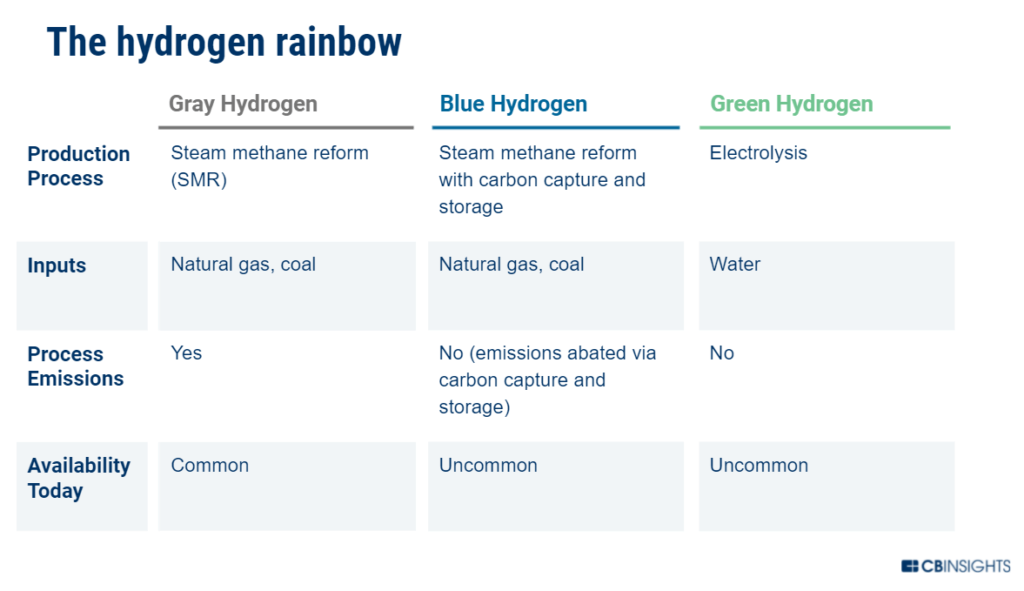It appears they are bullish.
And have a lot of names they are interested in.
From CB Insights, September 20:
How Hydrogen Will Help Industrials Meet Decarbonization Goals And Leave Fossil Fuels Behind
With funding and industry interest in hydrogen tech reaching record highs, we explain how the element can be used to decarbonize operations — across manufacturing, transportation, and utilities — and address key challenges and opportunities in the space.
As the manufacturing, transportation, and utility sectors look to reduce their carbon emissions, hydrogen could be the most promising energy source.
But for adoption to catch on broadly, the price of hydrogen needs to drop considerably to compete with fossil fuels. Hydrogen production capacities and distribution networks will also need to ramp up to support higher volumes.
To address these challenges, investors plan to pour about $500B into hydrogen projects globally through 2030. These initiatives are designed to reduce the price of hydrogen — especially green hydrogen — dramatically.
Meanwhile, companies are beginning to power factories, vehicles, and utilities with hydrogen as they work toward their carbon-neutral goals.
Below, we address the following questions:
- What is hydrogen? How is it produced, distributed, and used?
- Why does hydrogen matter?
- What do manufacturing, transportation, and energy companies need to consider for adoption?
- What does hydrogen investment activity look like? Who are the key players?
- What’s ahead?
What is hydrogen? How is it produced, distributed, and used?
Hydrogen is the most abundant element on earth, and it has a history of being used for energy. In the 1950s, NASA used liquid hydrogen as rocket fuel — and today, the industrial gas is commonly used in petroleum refining and fertilizer production.
Hydrogen has also recently gained attention for its potential to help decarbonize manufacturing, transportation, and energy. The molecule only emits water vapor when used as a fuel in hydrogen fuel cells, and it does not emit CO2 emissions when combusted.
That said, there are still some risks in using hydrogen for energy. For example, powering production by burning hydrogen creates NOx (nitrogen oxide) — a poisonous gas — so companies that choose to combust hydrogen will still need to implement scrubbers to clean waste gases.
The hydrogen rainbow
There are 3 kinds of hydrogen: gray hydrogen, blue hydrogen, and green hydrogen. The production process and emissions vary by type.

Most hydrogen produced today is gray and made via steam methane reform (SMR), which produces process emissions.
As companies work towards carbon neutrality goals, they are aiming to use more blue and green hydrogen. This means that more hydrogen will need to be produced via electrolysis — the splitting of water (H2O) into oxygen and hydrogen.
Electrolyzers — the units that induce electrolysis — are key to increasing the green hydrogen supply. Most plants being built employ proton exchange membrane (PEM) electrolyzers, which can produce hydrogen with intermittent renewable energy flow more easily than older electrolyzer types.
The hydrogen value chain....
....MUCH MORE
I am pretty much au courant with this stuff and see names with which I am unfamiliar. Worth a look for everybody but the most obsessive hydrogen wonk. And maybe even them.